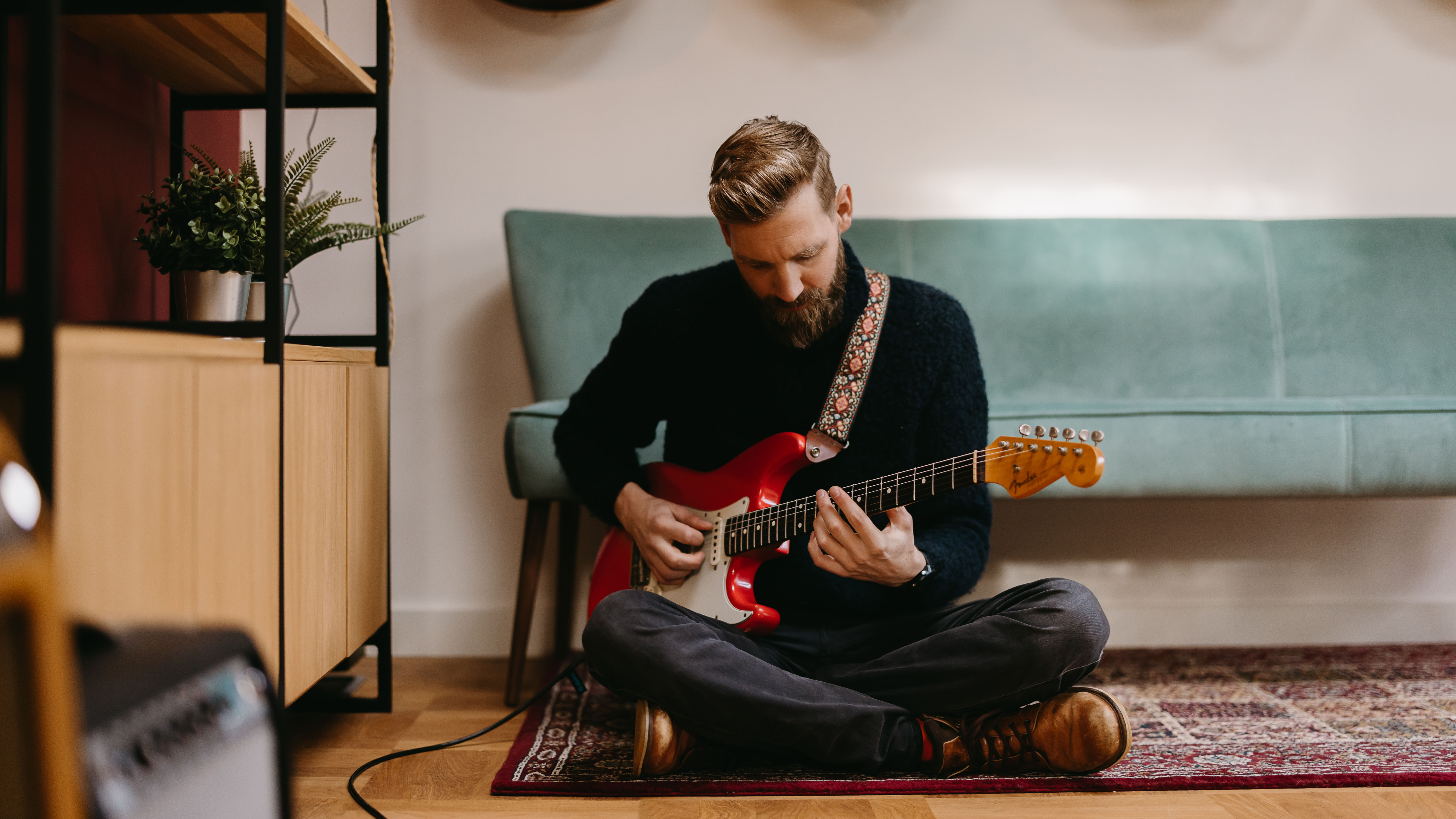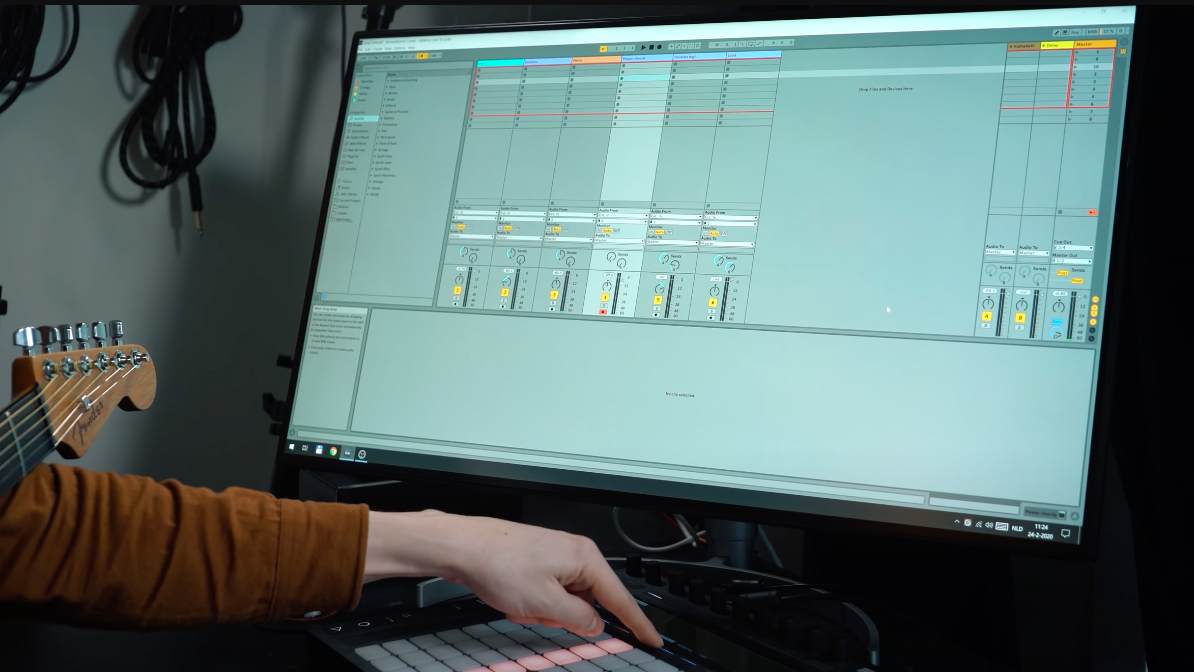"I could have been a way better guitar player if I'd just practiced and hadn't put the time into making videos, but nobody would have noticed because no one would have seen me" – YouTuber Paul Davids picks his 3 essential pieces of gear

If you play guitar and you visit YouTube, the chances are you're already familiar with Paul Davids. The guitar teacher from the Netherlands has become one of the most successful online personalities in our world with well over three million subscribers and counting.
'Keeping the guitar fresh and alive' is his channel's tagline and Paul's winning recipe is based on the sound ingredients of his easygoing personality, great production values and pure love for guitar playing – not just encouraging us to chase the next gear purchase.
"You can get great sounds out of any instruments, and I'm very picky with my own guitars, but I don't want to sort of enforce that idea upon other people usually," Paul tells us. So while he might travel to try some holy grail piece of vintage guitar for his channel, and he gets excited about great guitars like the rest of us, he doesn't do paid promotions or affiliate links and prefers to return to the focus of the cornerstones of his teaching days.
"I have my own guitar courses," notes Paul, "and for me, that's the job that makes the money, and the YouTube channel is really purely the creative stuff and no monetary decisions will ever determine whether I make a video or whether I say something or not. It's always my personal experience my own. It's always my own personal experience – my own view."
That approach has proved consistently inspiring as Paul's videos continue to empower players with more understanding, knowledge and appreciation for guitar.
And all this is leading us to something specific – a new MusicRadar regular where we ask players to choose three pieces of gear that are essential for their musical lives. And Paul's picks are a trio that are essential for musical expression; not just how he makes music but how he now communicates to a global audience.
1. Ableton Live

The way I write music just fits beautifully in the workflow of Ableton Live
"That's my DAW – it's the thing that helps me create music. And without the DAW you can only play guitar, and the guitar is used to create music with, right? So it's essentially the end goal; having something to put the guitar into.
Want all the hottest music and gear news, reviews, deals, features and more, direct to your inbox? Sign up here.
"The way I write music just fits beautifully in the workflow of Ableton Live and I use it for loop sessions as well. I think it's a great platform if you want to loop without a looper pedal.
"You have Scene view with these blocks, and each block is a loop that can be one bar, eight bars or 16 bars… depending on what you play. And it's very easy way to get a quick idea going. My friends work in Ableton, so it's easy to to flip back and forth between different platforms with the same project, basically. It's just an easy workflow and layout."
2. Sony A7S III camera

"The reason why I'm getting asked to do so many cool projects or things that I really appreciate is because people saw me in the first place. And if people never saw me, I wouldn't be asked.
Creating a space for yourself; that you're heard, that you're seen, that's super important as a musician
"I could have been a way better guitar player if I'd just practiced and hadn't put the time into making videos, but nobody would have noticed because no one would have seen me. So creating a space for yourself; that you're heard, that you're seen, that's super important as a musician. Because everywhere there are 10 guys who are better than you, but it's not about who is the best, it's about who sees you and and who wants to play with you. And if they don't know you, there's not a chance in the world – forget about it, no one is going to ask you.
So you have to have your friends or network around you personally, from your local scene, or if you want to do it more internationally or be discovered in another way, film yourself and create some online content on whichever platform works for you. I think it's very important.
"I started on my phone, which was an Android, and I didn't use a Mac. I had a phone and very old Sony – like a Handycam. And it would overheat after like 10 minutes and I would have to stop and put it in the fridge! Sometimes it didn't work and I'd have to put it back in the fridge. It was horrible – it was the worst. So then I invested in a better quality camera that could record for 30 minutes straight. That was so beautiful. So the investments go step by step and you can start with your phone – phones these days are so much better than the camera I had when I started so it's not really a problem.
"Now I use three Sony A7S IIIs because it just gives me the same look on every camera I use. I bought them three or four years ago and before that I used Sony A7s."
3. 1997 Fender Custom Shop Conetto Relic Strat

"This is not unobtainable for people. Yes, it is Custom Shop, but it's pretty old – not old vintage. So it's not more expensive because it's old, it's just old.
"I bought it fairly cheap because the frets were super worn down and it smelled like tobacco – it was very dirty. So I did a refret on it but when I picked it up, I felt like, oh yeah, there is life in this guitar. Which is very important.
"So I did refret on it and I just played the shit out of it. And it sounds so good. I have played vintage Strats that sound little bit more vibey, but it's always that [the control pot] is crackling, or you got a pickup switch that isn't a five-way so you're fiddling with it for the in-between settings. This is just a workhorse – it sounds great. No matter what happens, it will always be there.
"You can just lay it down – and sometimes guitars fall over, it doesn't really [matter] because it's sort of a relic anyway – one of the first relics they ever made in '97. No one will notice an extra dent."
"It's weird because sometimes I love it, sometimes I hate it, but it's always my go-to guitar. It feels so comfortable on the lap, and it just plays… there's something about it. It feels very musical when I play it – it's not a struggle. Sometimes with Les Pauls, I do love that sound but it never has the same sort of level of chillness. And it's so light. It's always a strength in the end."
- Check out Paul Davids' YouTube channel and find out more about his guitar courses at pauldavidsguitar.com

Rob is the Reviews Editor for GuitarWorld.com and MusicRadar guitars, so spends most of his waking hours (and beyond) thinking about and trying the latest gear while making sure our reviews team is giving you thorough and honest tests of it. He's worked for guitar mags and sites as a writer and editor for nearly 20 years but still winces at the thought of restringing anything with a Floyd Rose.




